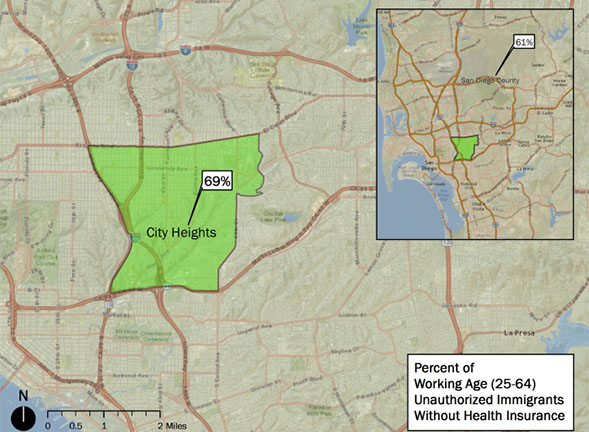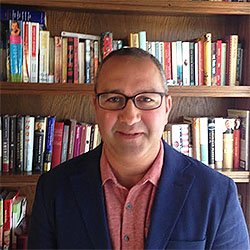Unauthorized and Uninsured
New research sheds light on health insurance for Californias undocumented immigrant populations.

Despite expanded access to medical insurance through the Affordable Care Act, about one million undocumented Californians remain excluded from state insurance exchanges, according to new data released by researchers at San Diego State and the University of Southern California's Center for the Study of Immigrant Integration.

Authored by Enrico Marcelli and Manuel Pastor, the research includes updated estimates of the number of undocumented residents in a range of California communities, along with their their current levels of health insurance and other characteristics such as: age, gender, poverty levels, countries of origin, labor participation, and the key industries and occupations in which they are employed.
“Our estimates — generated using both local community-based and publicly available data — help fill a research gap concerning medical insurance coverage and other socioeconomic characteristics among unauthorized and other Californians at the county and neighborhood levels with unprecedented specificity,” said lead author and SDSU demographer Enrico A. Marcelli.
The research was funded by The California Endowment, which seeks to highlight the contributions of of undocumented Californians to the state's communities and economies, while raising awareness of their lack of access to affordable health care coverage relative to U.S.-born residents.
What emerges from the research is a broad picture of health insurance data on all Californians with particular focus on the 14 sites in The California Endowment's Building Healthy Communities (BHC) initiative. They are a mix of urban, suburban and rural areas, but generally include some of the most economically disadvantaged neighborhoods in the state.
Key findings of the research include:
- Nearly one million people reside in the BHC sites, with the undocumented representing 13 percent of the population – almost double that of the state’s total share.
- Central Santa Ana in Orange County has the highest share of the undocumented across the sites, with 22 percent of the total population. Three sites in Los Angeles County – Boyle Heights, South Los Angeles, and Central West Long Beach – also have some of the highest shares of undocumented with 17 percent, 19 percent and 13 percent of the total population, respectively.
- Although each site has unique demographic and economic characteristics, the lack of medical insurance is a consistent theme. Only 38 percent of the working age unauthorized population in the BHC sites have medical insurance coverage, compared to the rates of native-born residents (79 percent).
- The share of medical insurance coverage for this population is even lower in some sites, including: South Los Angeles (28 percent), City Heights (31 percent), and Central Santa Ana (33 percent).
“We hope this data can help impact state and local policy that provides comprehensive access to medical insurance for undocumented Californians,” said Manuel Pastor, director of USC’s Center for the Study of Immigrant Integration. “Undocumented immigrants represent nearly 1 in 10 of the state’s workers, so covering a population that contributes an estimated $130 billion to our state’s GDP makes sense given the positive spillover effects on the economy.”
Downloadable fact sheets are available for the following BHC sites: City Heights; Boyle Heights; Central Santa Ana; Central, Southeast and Southwest Fresno; Central West Long Beach; Del Norte County; East Coachella Valley; East Oakland; East Salinas; Richmond; South Kern; South Los Angeles; South Sacramento; Southwest and East Merced; and for the state of California with all BHC sites.
More information and all fact sheets are available for download.



